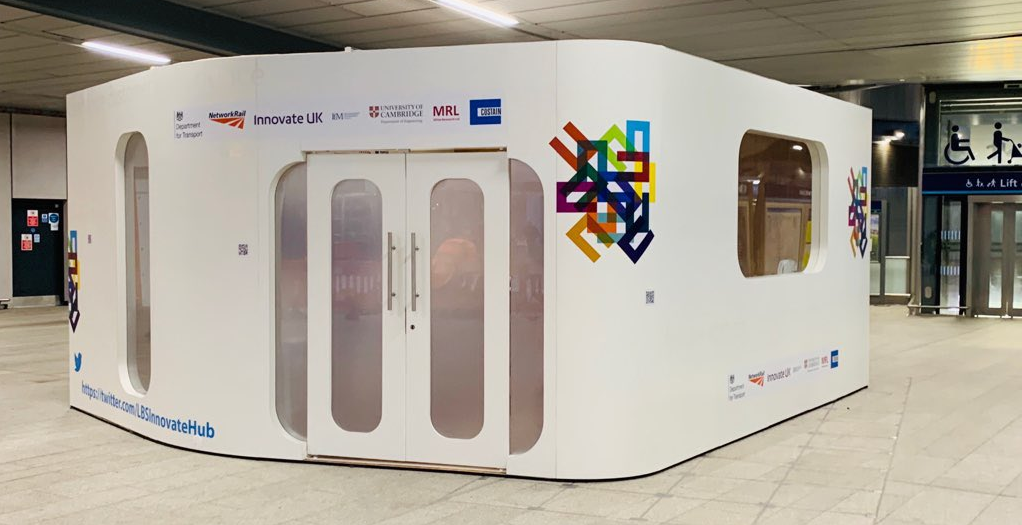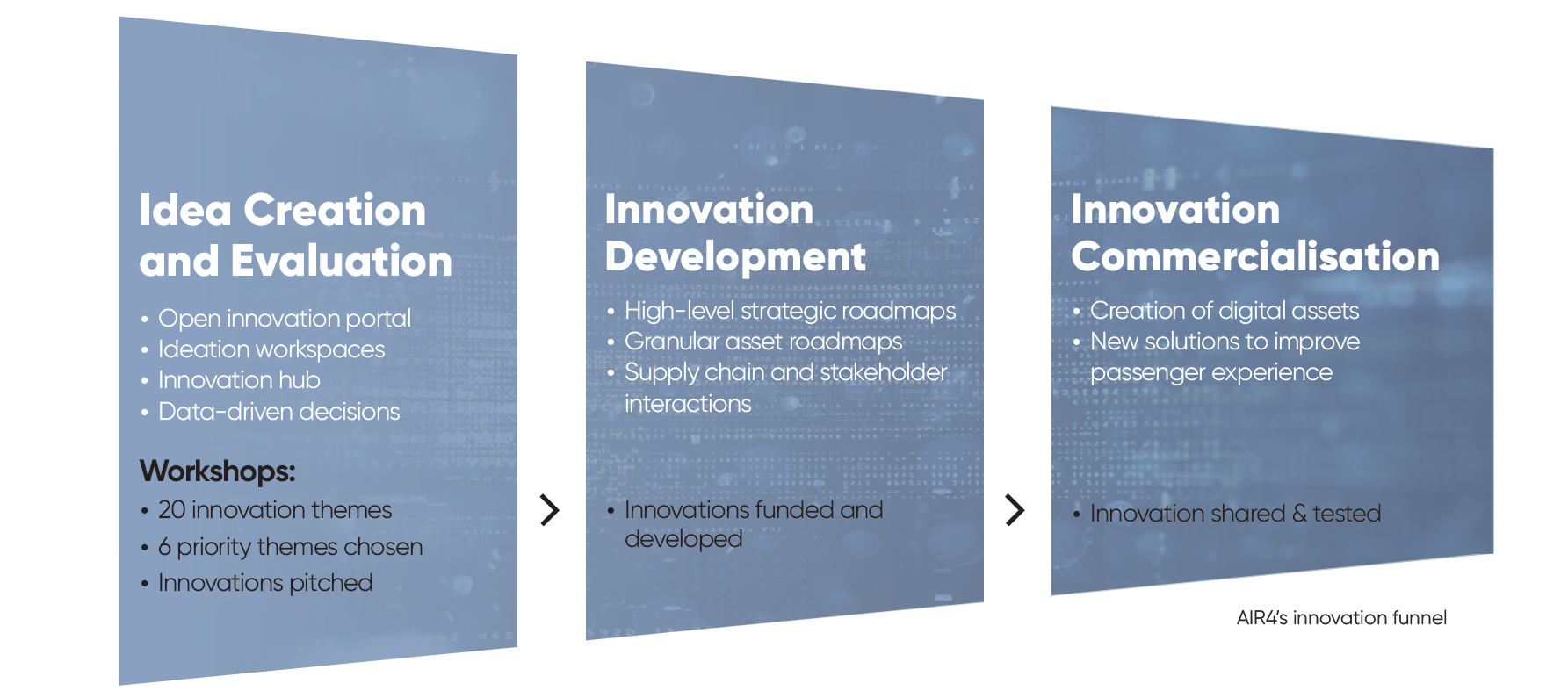Managing innovation in rail

The UK rail industry is ripe for innovation. Challenges and frustrations faced by passengers are frequently hitting the headlines. But where should the industry start with making innovations to improve the customer experience? And how can it make sure customers are listened to as part of managing the innovation process?
Rob Munro, Industrial Associate, IfM ECS, shares some insights into AIR4, a government-funded initiative to bring a more structured approach to making innovation happen in the rail sector.
If passengers could decide how to improve their rail journeys, or their experience at train stations, what would they prioritise? When you take a train, what would make the most difference to you and your fellow passengers on your journey?
As part of a national initiative to stimulate innovation in the rail sector, customer input and feedback has actively been sought, alongside expertise from the many organisations involved in the rail service ecosystem.
At London Bridge Station (itself having been through a recent major redevelopment) an ‘Innovation Hub’ has been installed, providing a space where passengers can find out more about new concepts currently under consideration for improving rail services, and share their feedback and insights. Using touch screens and smartphones, members of the public are actively encouraged to give their input. The Hub is staffed by project partners and suppliers, adding valuable personal interactions as another way to prompt exchange of ideas.

Photo: The Innovation Hub at London Bridge Station – a space for gaining passenger insights as well as running strategic innovation workshops with stakeholders.
Taking a structured approach to managing innovation
The Innovation Hub is part of Advancing Innovation in Rail 4 (AIR4), an Innovate UK-funded initiative, which builds on work done previously under AIR3 to develop a passenger-facing IT infrastructure. The objective of AIR4 is to identify a range of digital innovation tools, platforms and assets that the wider supply chain and passengers can engage with and use, with a focus on passenger experience at stations.
Over the past decade, the UK rail industry has undergone significant growth in passenger numbers and increased investment in infrastructure. But with the higher demand, the quality of passenger experience has struggled to keep up.
This presents a pressing need to identify innovations which can bring dramatic improvement to the customer experience. But crucially, these innovations must be managed and planned strategically, by focusing on customer-centric priorities, and by creating a roadmap for development and implementation.
But taking a structured approach to managing innovation is not easy, particularly in a traditional sector like rail with legacy standards and ways of working. The fragmented nature of the UK rail industry—encompassing train operators, constructors, rail operators, suppliers, station operators and passenger bodies—can hinder the pace and scale of innovation. So industry-wide collaboration is essential to deliver improvements successfully. This requires involving a broad range of passenger-facing organisations (PFOs) and the supply chain – any organisation that has products or services that impact on passengers.
Bringing these parties together, IfM ECS facilitated a series of workshops with stakeholders across the rail industry to clarify the challenges for passengers, identify key innovation themes and hot topics, and develop a strategic technology roadmap focused on bringing improvements to large mainline stations in the UK.
For the rail industry, the whole process was itself an innovation. Starting out, it wasn’t clear what the end output would look like, and the process was refined as the project progressed.
The innovation funnel
An initial workshop with 50 people from across the industry kicked off the project with an exploration of the passenger experience. This identified 20 themes for improvement where innovations could be focused, including areas such as sustainable rail infrastructure, ticketless travel, station platform upgrades, and smart techniques to manage passenger flows.
Using data-driven decision making and established IfM frameworks for supporting the selection process, six themes were chosen for further development in a second workshop. Each was assigned a theme leader, and a team of 3 or 4 people who focused on creating an innovation under this theme during and between workshops.
In the final workshops, the teams produced specific concepts for real potential innovations based on the six themes. These were presented to a portfolio steering group led by project-partner Costain, to decide which of the six ideas would go forward for development.

Photo: AIR4's innovation funnel. Credit: The Manufacturer
From ideas to reality
To implement these ideas and take them through to commercialisation, high level strategic roadmaps have been produced with a focus on a longer timeframe, as well as more granular innovation roadmaps to apply to specific and tangible improvements currently being worked on.
An IT innovation infrastructure is used to scale and expand the initial part of the innovation funnel through into development and commercialisation, including creation of “open” digital assets which are being made freely available to the rail industry as a way to stimulate collaborative innovation at a faster pace. All ecosystem partners are being encouraged both to access and to contribute to the digital assets.
Listening to customers
So in the midst of this complex process, involving many different organisations and innovations, and taking place over a long-term period, how can the AIR4 project partners ensure that the customer voice is still heard loudly and clearly?
AIR4’s aim is to drive a customer-centric approach: listening to customer opinions and ideas and building innovations which are focused on improving the customer experience.
This involves providing a chance for customers to share their views and to get involved in testing innovations. Often finding ways to do this requires innovative thinking of its own. The Innovation Hub at London Bridge Station is one such example – by physically locating a means for gaining customer input visibly in place where customers are passing through, and by talking with them during their journey when their rail experience is fresh in the mind, AIR4 are gaining immediate and engaged interactions.
There are many possibilities that physical spaces like the London Bridge Station Innovation Hub can offer, including harnessing technologies such as virtual reality (VR) for gaining feedback. VR is increasingly being used in construction and manufacturing to test new designs, structures or other innovations, and can be a valuable way to trial new concepts through immersive experiences.
Such spaces are also an important channel for customer service, promoting better communication with customers and a more inclusive relationship between customers and the range of suppliers they interact with during a transaction.
AIR4 have used other means for gathering customer feedback too, including online tools such as the open innovation portal to provide an interactive means to facilitate dialogue.
Often the best ideas come from the people who need to use them. In the rail sector, a cultural change to place passenger experience at the centre of change will be fundamental to delivering innovation successfully.
Find out more
Accelerating Innovation in Rail (AIR) 4 draws on cross-discipline skills and experience from its project partners, Costain, IBM, Milne Research and the Institute for Manufacturing. The aim is to deliver a scalable digital innovation infrastructure to help make the UK rail industry among the best in the world.









